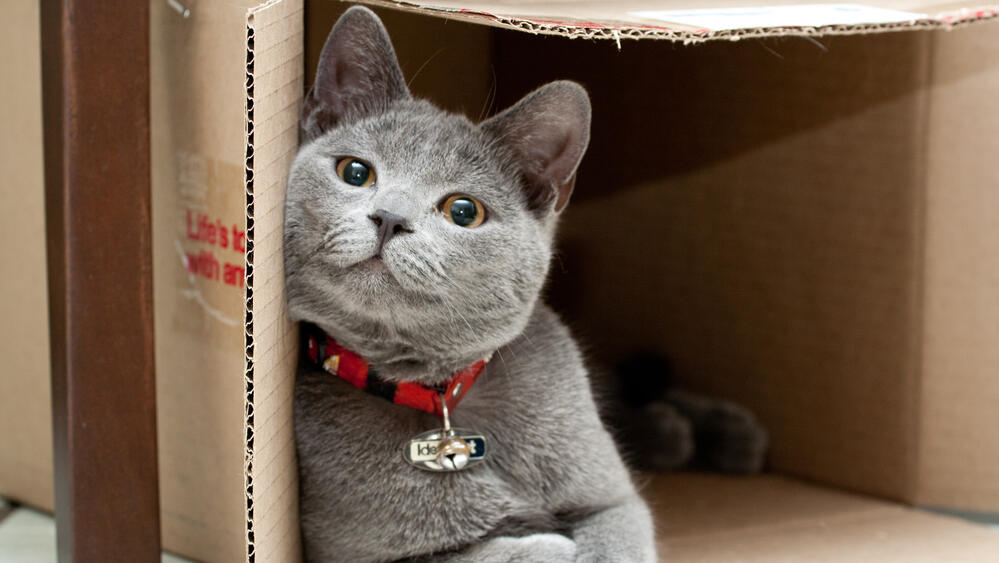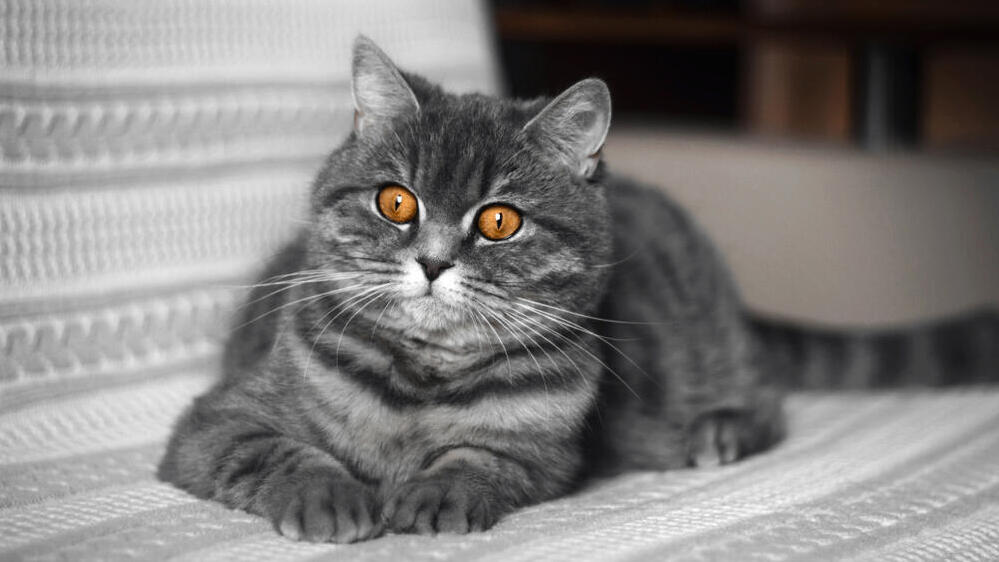Getting your Trinity Audio player ready...
Humans are, as far as we know, the only animals with a true language —one with complex rules and syntax. However, this doesn’t mean we are the only ones capable of learning words and associating them with objects or even abstract concepts.
Studies on various great apes—chimpanzees, bonobos, and gorillas—have shown that these animals can learn dozens to hundreds of words, associating them with hand gestures or images. This ability also exists in a more familiar yet evolutionarily distant species—dogs.
Most domestic dogs understand at least a few words their owners have taught them, such as “come,” “sit,” or their own names. Many dogs also pick up the meanings of frequently heard words, such as “food” or “walk.” Some exceptionally talented dogs can learn the names of dozens of toys and remember them for weeks. One particularly talented dog, trained from puppyhood, learned the names of over a thousand objects.
But what about cats? While cats live with us at home, we don’t often see them following commands. Generally, it seems most cats don't pay attention to or care about what humans say. However, recent studies suggest this perception may be mistaken. It turns out that cats recognize the speech patterns when addressing them and even know their names, though they won’t necessarily respond when called. They’re even capable of learning the names of other cats they live with.
“I was very surprised,” said Saho Takagi, lead author of the latest study, in an interview with Science, “because that meant cats were able to eavesdrop on human conversations and understand words without any special reward-based training.”
In a new study, Takagi and her team demonstrated that cats can also associate words with images, much like infants learning to speak - and they seem to do it even faster than human infants.
The surprise factor
In studies conducted with dogs, researchers would call out the name of a specific toy and ask the dog to fetch it. However, they recognized that this method was unlikely to be effective with cats, as it was probable that none of the feline participants would take the initiative to retrieve the requested toy. Therefore, they adopted a different experimental setup, one previously used in studies with infants who had not yet learned to speak.
This setup is based on the observation that both infants and animals tend to spend more time looking at surprising stimuli and spend less time on expected or familiar stimuli. In the original experiment, researchers presented 14-month-old infants with images of two different objects, each consistently paired with a particular word. After the infants became accustomed to hearing the specific word alongside its respective object, the researchers presented the objects again—sometimes with the paired word, and other times with the “wrong” word, which the infants had associated with the other object. In the latter case, the infants looked at the image for a longer duration, suggesting they had learned which word was linked to each object and were surprised when the words were swapped.
In the new study, the researchers conducted a very similar experiment with cats instead of infants. They tested 31 cats, some of which were house cats, while others lived in a "cat café" where customers could play with and pet them. The cats' owners held them in front of a computer screen, or if the cats were particularly relaxed, the computer was simply placed in front of them. On the screen, two figures appeared one after the other: a blue unicorn and a red sun. Both figures expanded and contracted to capture the cats’ attention. When the unicorn appeared, the cats heard a recording of their owner saying 'Keraru'; for the sun, the phrase was 'Parumo.' These aren’t real Japanese words but rather combinations of syllables likely unfamiliar to the cats.
The researchers presented the image–word combinations until the cats had 'got the idea' and began to lose interest. How can you tell when a cat is bored? The cats looked at the figures less than they did initially—in fact, they spent fifty percent less time watching the screen. At this point, the testing phase began. The researchers showed the cats the same two figures, but this time, in half of the trials, the unicorn was paired with the word 'Parumo' (previously associated with the image of the sun), and the sun was paired with 'Keraru' (previously associated with the image of the unicorn). The switch aimed to gauge whether cats, like infants, would be surprised by the swap.
Yes, They Do Notice Us
The cats looked significantly longer at the figures when these were accompanied by the “wrong” words, that is, words not initially paired with them. “Some cats even gazed at the screen with their pupils dilated during the ‘switched’ condition,” said Takagi. “It was cute to see how seriously they participated in the experiment.”
This suggests that the cats formed an association between the image and the word—otherwise, they wouldn’t have been surprised when the words appeared with different images. Furthermore, the cats achieved this faster than human infants: while most infants required four demonstrations of each image-word pair, lasting 15 seconds each, most cats made the association after just two demonstrations, each lasting nine seconds
“Cats pay attention to what we say in everyday life—and try to understand us—more than we realize,” Takagi concluded. Notably, the cats in this study learned to link words to images without any direct reinforcement or reward, such as food or petting. They simply heard the word, observed the image, and made the connection, much like infants during language acquisition.
In future studies, the researchers hope to study cats that have not grown up in human households to determine whether human presence is essential for developing this ability. They also aim to investigate whether wild cats, which have not been domesticated, can exhibit similar capabilities.
Get the Ynetnews app on your smartphone:



